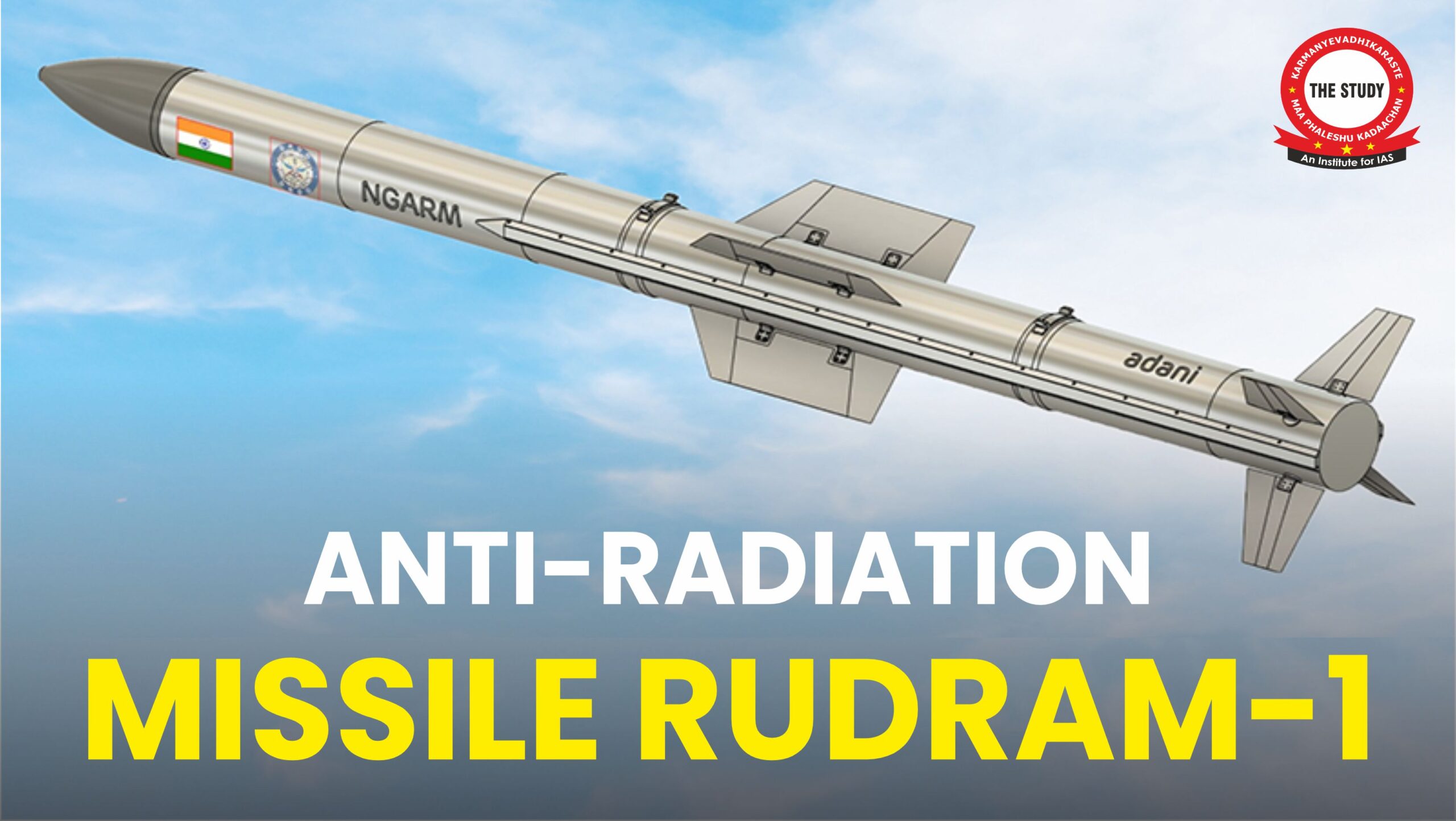Font size:
Print
Anti-Radiation missile Rudram-1
Context:
India has successfully test-fired its first indigenous anti-radiation missile, the Rudram-1, developed by the DRDO for the Indian Air Force (IAF).

About Rudram- 1:
- The missile is integrated on SU-30 MKI fighter aircraft as the launch platform, having capability of varying ranges based on launch conditions.
- It has INS-GPS navigation with Passive Homing Head for accurately hitting radiation emitting targets.
- It is an Air – to surface missile.
- The missile can be launched from varying altitudes, ranging from 500 metres to 15 kilometres, and has a range of up to 250 kilometres.
- Speed 0.6 to 2 Mach and uses Solid fuel.
- The country has established indigenous capability to develop long range air launched anti-radiation missiles for neutralising enemy Radars, communication sites and other RF emitting targets.
- However, they can also be directed at jammers and communication radios.
Technology:
- An Inertial Navigation System (INS) is a navigation aid that uses accelerometers and gyroscopes to calculate the position, orientation, and velocity of a moving object.
- It does this autonomously, without relying on external signals like GPS, making it essential for applications in aerospace, marine, military, and autonomous vehicles.
- The Passive Homing Head can detect, classify and engage targets over a wide band of frequencies as programmed.
- This precision is crucial for Suppression of Enemy Air Defence (SEAD) operations.
Significance :
- Modern warfare is increasingly network-centric, involving advanced detection, surveillance, and communication systems integrated with weapons systems.





